Japanese air raids on Darwin and northern Australia, 1942-43
On 19 February 1942 mainland Australia came under attack for the first time when Japanese forces mounted two air raids on Darwin. The two attacks, which were planned and led by the commander responsible for the attack on Pearl Harbour ten weeks earlier, involved 54 land-based bombers and approximately 188 attack aircraft which were launched from four Japanese aircraft carriers in the Timor Sea. In the first attack, which began just before 10.00 am, heavy bombers pattern-bombed the harbour and town; dive bombers escorted by Zero fighters then attacked shipping in the harbour, the military and civil aerodromes, and the hospital at Berrimah. The attack ceased after about 40 minutes. The second attack, which began an hour later, involved high altitude bombing of the Royal Australian Air Force base at Parap which lasted for 20-25 minutes. The two raids killed at least 243 people and between 300 and 400 were wounded. Twenty military aircraft were destroyed, eight ships at anchor in the harbour were sunk, and most civil and military facilities in Darwin were destroyed.

Like to copy this image? Please click here first
AWM 157291 Darwin. Naval personnel use an asbestos shield to protect them from the heat as they direct a hose onto a blazing oil tank, set on fire during a Japanese air raid.
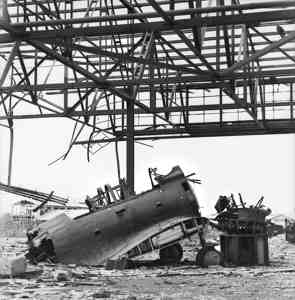
Like to copy this image? Please click here first
AWM 026977 19 February 1942. In the second Japanese attack on Darwin, the RAAF installations were seriously damaged. The photograph shows the remains of a Douglas dive bomber in one of the hangars.
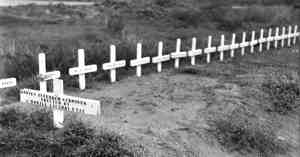
Like to copy this image? Please click here first
AWM 012787 Darwin. Graves of civilian personnel killed during a Japanese air raid. The bodies were interred and the crosses erected by No 12 Mobile Laundry, Australian Army.
Contrary to widespread belief at the time, the attacks were not a precursor to an invasion. The Japanese were preparing to invade Timor, and anticipated that a disruptive air attack would hinder Darwin’s potential as a base from which the Allies could launch a counter-offensive and at the same time would damage Australian morale. With Singapore having fallen to the Japanese only days earlier, and concerned at the effect of the bombing on national morale, the government announced that only 17 people had been killed.
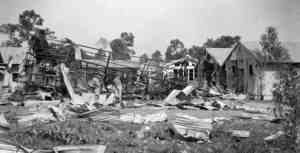
Like to copy this image? Please click here first
AWM 012699 Darwin. Australian soldiers inspecting damage to defence buildings following a Japanese bombing raid.
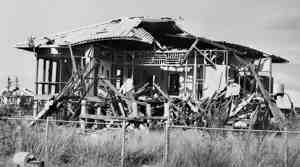
Like to copy this image? Please click here first
AWM 012782 Darwin. A civilian house damaged by a Japanese air raid.
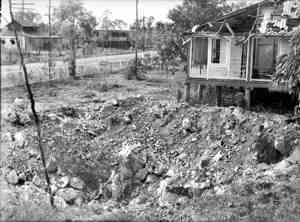
Like to copy this image? Please click here first
AWM 012785 Darwin. A bomb crater beside a civilian house damaged by a Japanese air raid. A serviceman indicates the depth of the crater.
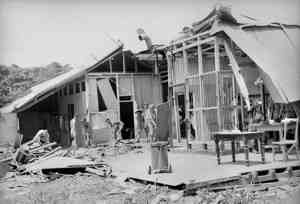
Like to copy this image? Please click here first
AWM NWA0447 Darwin. Repairing the ruined buildings, possibly huts on the RAAF base, damaged by Japanese bombs during air raids.
The air attacks on Darwin continued until November 1943, by which time the Japanese had bombed Darwin 64 times. During the war other towns in northern Australia were also the target of Japanese air attack, with bombs being dropped on Townsville, Katherine, Wyndham, Derby, Broome and Port Hedland.
In the hours following the air raids on 19 February, believing that an invasion was imminent, Darwin’s population began to stream southwards, heading for Adelaide River and the train south. Approximately half Darwin’s civilian population ultimately fled. The panic in the town was repeated at the RAAF base, where servicemen deserted their stations in great numbers. Three days after the attack 278 servicemen were still missing. The exodus south (which later became known as ‘The Adelaide River Stakes’), and the looting and disorder which subsequently occurred, led the government to hurriedly appoint a Commission of Inquiry led by Mr Justice Lowe which issued two reports, one on 27 March and the other on 9 April 1942.
Source - National Australian Archives, Fact Sheet 195





